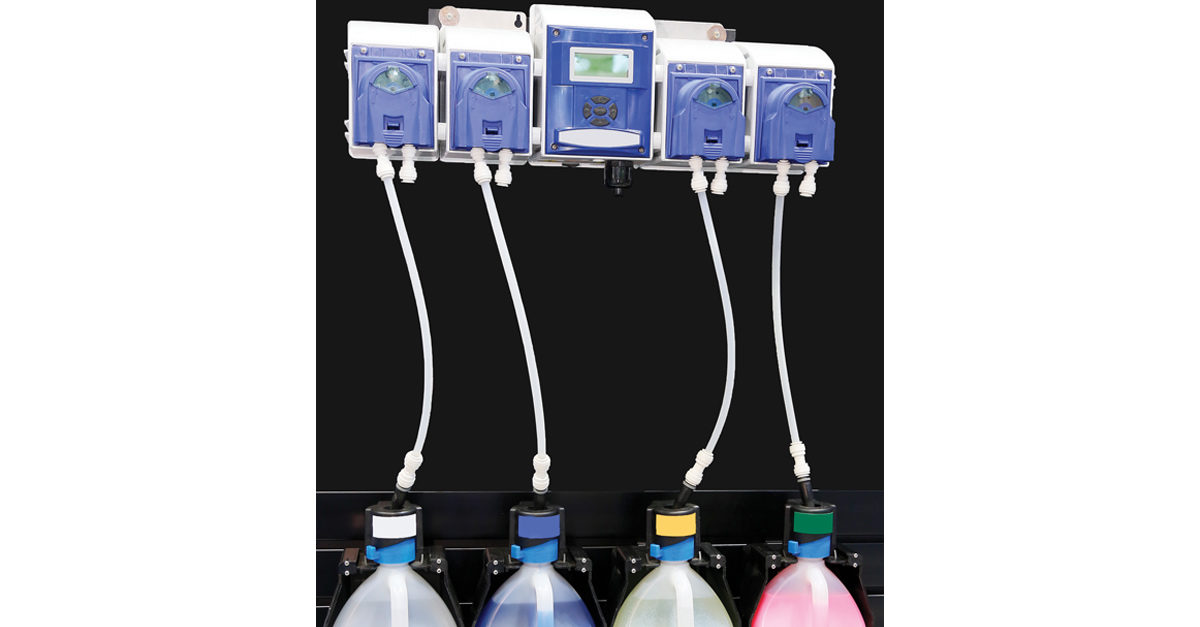Over the past two decades, cleaning solutions have become much more highly concentrated. The reasons for this formula change include cost savings and the focus on green cleaning and sustainability.
When a cleaning solution is highly concentrated it lasts a longer time, decreasing the number of times if must be replenished, the amount of fuel necessary to transport it, and the packaging it comes in. This translates into cost savings for the cleaning contractor and the customer, plus benefits the environment through reduced greenhouse gases.
Get into the Mix
These concentrated solutions must be mixed properly and safely. Mixing cleaning chemicals manually with a bucket, or using what is called the “glug-glug” system, is not accurate and can even be dangerous. One of the most common cleaning accidents is getting splashed in the eyes or onto the skin with cleaning chemicals.
This is where automatic dilution systems come into play. These systems not only help eliminate waste, they ensure the correct amount of chemical is used for the cleaning task at hand, improving cleaning effectiveness.
Most systems are designed to be mounted on a wall in a janitorial closet or wherever else a water connection is available. Others are designed to “dispense on the move.” These systems are not mounted on a wall, but feature a large trigger sprayer, with one end connected to a water outlet and the other to the cleaning solution.
Are You in the Loop?
Another main difference in dilution systems involves containment of the solution.
A partial loop system offers some containment of the cleaning solution, but it does not provide exposure-proof operation. When using the dispensing unit, workers may come in contact with the solution, or be exposed to fumes. Both situations can prove harmful to the user.
A closed-loop system, on the other hand, provides total containment of the cleaning solution. This leads to a lower risk of a spill, splash, or fume release during the dilution process.
Closed-loop systems are often required in specific environments or settings, such as schools or medical facilities. Building owners or managers following green cleaning programs often request these systems.
Mixing Goes Green
Dilution systems also are essential for facilities seeking Leadership in Energy and Environmental Design (LEED) certification. These systems help monitor how much cleaning solution is used for each task. Using just the right amount of cleaning solution, whether green or traditional, helps reduce the impact cleaning solutions have on the cleaning staff, building occupants, and the environment.



